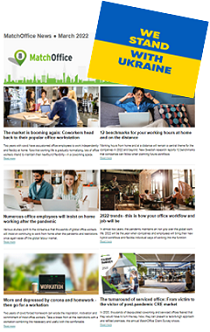
12 benchmarks for your working hours at home and on the distance

The pandemic waves have manifested office employees´ home and remote working as a sustained part of the flexible workflow in their company or organisation.
In many countries, up to half of all office employees have worked from home during the pandemic. Currently, the companies struggle to find and implement sustainable work solutions and workflows for the post-corona era.
Last autumn, the Swedish independent and multidisciplinary research institute Ratio published a report ´12 points on teleworking after Covid-19´ that updates current research results about office employees working from home and remotely.
The Swedish researchers formulate 12 benchmarks that employers and managers can take advantage of before making decisions about future workflows in their companies beyond the pandemic.
Not without problems
"Teleworking can provide many benefits in the form of better staff recruitment, increased well-being and enhanced productivity, but is not without problems," Ratio CEO and professor of sociology at Stockholm University, Lotta Stern states.
"Teleworking risks eroding company culture, causing a lack of security and creating A-teams with employees physically present in the office and B-teams of remote workers. Our 12 benchmarks are focused on this."
 Office employees' remote work risks eroding company cultures, causing a lack of security and creating A-teams with employees physically present in the office and B-teams of home-working colleagues. Photos: iStock |
To achieve a new status quo for the workplace of the future, the goal is to find and agree on new ways of working that are beneficial to both employers and employees, whether it is a physical office, remote or hybrid work.
Here are the 12 benchmarks that the Swedish Ratio research team suggests companies should look at when planning future workflows at their workplaces:
1. How will your office be used in the future - as a workplace, meeting place or both?
2. Is your office environment designed and prepared to embrace the necessary functions for the company´s future use?
3. Can your company afford to refrain from offering telework and/or hybrid work in light of the significant lack of skills
in many industries?
4. How urgent is the risk of cyber attacks during remote and/or hybrid work, and how can your company prevent and
reduce the risk?
5. How should the formal and informal remote and/or hybrid work be carried out: What digital tools can the company
make available to enable competence transfer, collaboration and social interaction?
6. Does your company have the right managers to manage your remote and/or hybrid work?
 Studies show significant importance to employees that their employers are ready to communicate soonest and decide what the future will look like in their workplace. |
7. How urgent is the risk of a we-and-they split between your office and remote workers - how can it be prevented and
reduced through clear objectives?
8. How is the responsibility for your company's environmental work distributed - is the distribution sufficiently evident
to employees and managers?
9. How can your company best help ensure that your remote and/or hybrid employees have the right and adequate
equipment?
10. Can coworking spaces be a relevant offer for your employees as an alternative to their home offices?
11. To what extent can remote or hybrid work increase your employees' work-life balance and thus their fundamental
well-being?
12. Will your remote work and/or hybrid work be able to affect male and female employees differently - how will your
remote work be able to affect equality in the long term?
Announce soonest
Current research shows the importance for employees that their employers communicate as quickly as possible and make decisions about what the future will look like in their workplace.
"Studies indicate that teleworking, especially for women, can have an impact on gender equality, lead to reduced wage development and reduce career opportunities," Lotta Stern says.
 "Teleworking can provide many benefits such as better staff recruitment, increased well-being and enhanced productivity, but is not without any problems," CEO of the Swedish Research Institute Ratio, Lotta Stern says. Photo: Ratio.se |
"Many women, not least those with children, find that the puzzle of life has become easier to solve while working from home during the pandemic.
On the other hand, homeworking men feel more stressed reconciling their work and family life. What the long-term consequences of this will be, we have to wait and see," Lotta Stern adds.
 Read more:
Read more:
Lifewire.com: The 10 Best Working From Home Tips in 2022
Forbes.com: How To Grow Your Agency's Remote Work Culture
Teambuilding.com: Remote Work: The Ultimate Guide for 2022
Peoplemanagingpeople.com: 27 Best Practices For Managing Remote Teams In 2022



